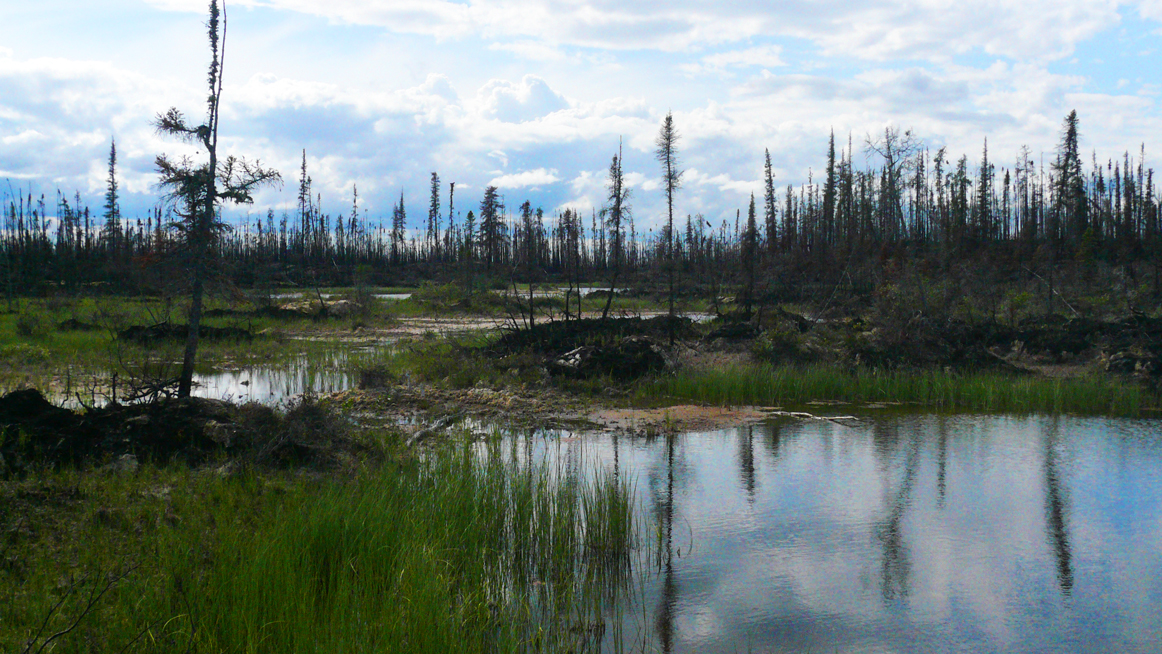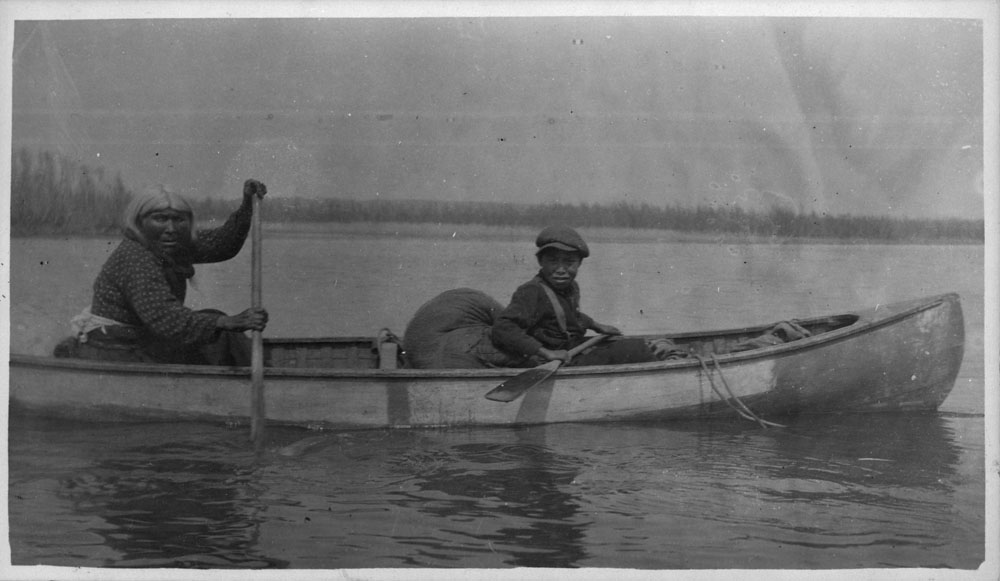|
Tłı̨chǫ
The Tłı̨chǫ (, ) people, sometimes spelled Tlicho and also known as the Dogrib, are a Dene First Nations people of the Athabaskan-speaking ethnolinguistic group living in the Northwest Territories of Canada. Name The name ''Dogrib'' is an English adaptation of their own name, (or ) – “Dog-Flank People”, referring to their fabled descent from a supernatural dog-man. Like their Dene neighbours they called themselves often simply ("person", "human") or ("People, i.e. Dene People"). The Tłı̨chǫ's land is known as (or , or ). On the 1682 Franquelin map, Dogrib was recorded as "Alimousp oiak" (from Cree , "Dog-Flanks"). Communities The Tłı̨chǫ have six communities with a majority of Tłı̨chǫ residents: Behchokǫ̀ (formerly Rae-Edzo), Whatì (Lac la Martre), Gamèti (Rae Lakes), and Wekweètì (Snare Lake), the four communities of the Tłı̨chǫ Government, and Dettah (T'èɂehdaà) and Ndilǫ, the communities of the Yellowknives Dene Fir ... [...More Info...] [...Related Items...] OR: [Wikipedia] [Google] [Baidu] |
Tłı̨chǫ Girls
The Tłı̨chǫ (, ) people, sometimes spelled Tlicho and also known as the Dogrib, are a Dene First Nations in Canada, First Nations people of the Athabaskan languages, Athabaskan-speaking ethnolinguistic group living in the Northwest Territories of Canada. Name The name ''Dogrib'' is an English adaptation of their own name, (or ) – “Dog-Flank People”, referring to their fabled descent from a supernatural dog-man. Like their Dene neighbours they called themselves often simply ("person", "human") or ("People, i.e. Dene People"). The Tłı̨chǫ's land is known as (or , or ). On the 1682 Jean-Baptiste-Louis Franquelin, Franquelin map, Dogrib was recorded as "Alimousp[i]goiak" (from Cree language, Cree , "Dog-Flanks"). Communities The Tłı̨chǫ have six communities with a majority of Tłı̨chǫ residents: Behchokǫ̀ (formerly Rae-Edzo), Whatì (Lac la Martre), Gamèti (Rae Lakes), and Wekweètì (Snare Lake), the four communities of the Tłı̨chǫ Govern ... [...More Info...] [...Related Items...] OR: [Wikipedia] [Google] [Baidu] |
Tłı̨chǫ Government
The Tłı̨chǫ Government, or Tłı̨chǫ Ndekʼàowo (also rendered Tlicho Government and Tlicho Ndekʼaowo), is a First Nations organization representing the Tłı̨chǫ Nation, Dene people of the Northwest Territories, Canada, and covering much of their traditional territory, Tłı̨chǫ Ndé, within the larger Dene Country of Denendeh. The devolved government was created in 2005 when the Tłı̨chǫ Nation ratified the Tłı̨chǫ Agreement with the Government of Canada. Through this agreement certain rights relating to lands, resources and self-government were defined including Tłı̨chǫ Government ownership of "39,000 km2 of land located between Lake Tıdeè and the Great Bear Lake including surface and subsurface rights, the ability to define its membership known as Tłı̨chǫ citizens, jurisdiction over lands and resources across Tłı̨chǫ Ndé and establishment of the Wekʼèezhìı Land and Water Board and the Wekʼèezhìı Renewable Resources Board and a s ... [...More Info...] [...Related Items...] OR: [Wikipedia] [Google] [Baidu] |
Behchokǫ̀
Behchokǫ̀ ( ɛ́ht͡ʃʰókʰõ̀or ɛ́ht͡sʰókʰõ̀ ) (from the Tłı̨chǫ meaning "Behcho's place"), officially the ''Tłı̨chǫ Community Government of Behchokǫ̀,'' is a community in the North Slave Region of the Northwest Territories, Canada. Behchokǫ̀ is located on the Yellowknife Highway (Great Slave Highway), on the northwest tip of Great Slave Lake, approximately northwest of Yellowknife. History Explorer Samuel Hearne was the first European to encounter Dogrib-speaking people while crossing the lands north of Great Slave Lake in 1772. Later, in 1789, trader Alexander Mackenzie traveled by canoe very close to their territory while trading with the Yellowknives, another First Nations peoples, along the north arm of the big lake. The first trading post in this region was at the entrance of Yellowknife Bay, established in 1789 by the North West Company, a post known as Old Fort Providence. It was established for the benefit of both the Yellowknives ... [...More Info...] [...Related Items...] OR: [Wikipedia] [Google] [Baidu] |
Whatì
Whatì (; from the Dogrib language meaning "Marten Lakes"), officially the ''Tłı̨chǫ Community Government of Whatì'' is a First Nations community in the North Slave Region of the Northwest Territories, Canada. Whatì is located by Lac La Martre, about northwest of the territorial capital of Yellowknife. History With rich and varied wildlife, the area has long been a favoured hunting ground of the Tłı̨chǫ (Dogrib Dene) Indigenous people. The North West Company established a trading post there in 1793, and many natives began settling there permanently, while they continued to hunt and fish in the area. With the establishment of a trading post at Fort Rae on Great Slave Lake in the late 19th century, most regional trading was accomplished at the Hudson's Bay Company and free traders posts there. A trading post at Lac La Martre was not again established until the 1920s. On January 1, 1996, the community officially changed its name from Lac La Martre to the Tłı̨chǫ nam ... [...More Info...] [...Related Items...] OR: [Wikipedia] [Google] [Baidu] |
Denendeh
The Northwest Territories is a federal Provinces and territories of Canada, territory of Canada. At a land area of approximately and a 2021 census population of 41,070, it is the second-largest and the most populous of Provinces and territories of Canada#Territories, the three territories in Northern Canada. Its estimated population as of the first quarter of 2025 is 45,074. Yellowknife is the capital, most populous community, and the only city in the territory; its population was 20,340 as of the 2021 census. It became the territorial capital in 1967, following recommendations by the Carrothers Commission. The Northwest Territories, a portion of the old North-Western Territory, entered the Canadian Confederation on July 15, 1870. At first, it was named the North-West Territories. The name was changed to the present Northwest Territories in 1906. Since 1870, the territory has been divided four times to create new provinces and territories or enlarge existing ones. Its current ... [...More Info...] [...Related Items...] OR: [Wikipedia] [Google] [Baidu] |
Gamèti
Gamètì (; formerly known as Rae Lakes until 4 August 2005), officially the ''Tłı̨chǫ Community Government of Gamètì'' is a community in the North Slave Region of the Northwest Territories, Canada. Gamètì, according to the Prince of Wales Northern Heritage Centre means "rabbit-net lake". 'Gah means 'rabbit', and "mi" means net, "tì" means lake, or water. It is one of the four Tłı̨chǫ communities which form part of the Tlicho Government. History The area is within the traditional territory of the Tłı̨chǫ (Dogrib) First Nations and was a popular hunting camp prior to permanent settlement. In the 1960s, Dene elders around Behchokǫ̀ decided to return to the land and establish traditional camps in the bush. Gamètì was established during this time, although in more recent years it too has become a modern community with essential services of its own. The community was officially known as ''Rae Lakes'' until August 4, 2005. Before 2005, the community was unincorp ... [...More Info...] [...Related Items...] OR: [Wikipedia] [Google] [Baidu] |
Wekweètì
Wekweètì (; from the Dogrib language meaning "rock lakes"), officially the ''Tłı̨chǫ Community Government of Wekweètì'' is a community in the North Slave Region of the Northwest Territories, Canada. Wekweètì is a Tłı̨chǫ (Dogrib Dene) aboriginal community and is located north of Yellowknife. It has no year-round road access but does have a winter ice road connection; the majority of transportation to and from the community is through the Wekweètì Airport. Wekweètì is the closest community to the Ekati Diamond Mine on the border with Nunavut. Wekweètì is part of the Tlicho Government. History The area is within the traditional territory of the Tłı̨chǫ (Dogrib) First Nation and was a popular hunting camp prior to permanent settlement. In the 1960s, Dene elders around Behchokǫ̀ decided to return to the land and establish traditional camps in the bush. Wekweètì was established during this time, although in more recent years it too has become a modern c ... [...More Info...] [...Related Items...] OR: [Wikipedia] [Google] [Baidu] |
Yellowknives
The Yellowknives, Yellow Knives, Copper Indians, Red Knives or T'atsaot'ine (Wíílíídeh dialect: ''Tetsǫ́t'ınę'') are indigenous peoples in Canada, indigenous peoples of Canada, one of the five main groups of the First Nations in Canada, First Nations Dene who live in the Northwest Territories. The name, which is also the source for the later community of Yellowknife, derives from the colour of the tools made from copper deposits. History The historic Yellowknive tribe lived north and northeast of the Great Slave Lake (''Tinde'e'' - "Great Lake") around the Yellowknife River and Yellowknife Bay (''Wíílíídeh cho'' - "Nelma, Inconnu River") and northward along the Coppermine River, northeast to the Back River (Nunavut), Back River (''Thlewechodyeth'' or ''Thlew-ee-choh-desseth'' - "Great Fish River") and east to the Thelon River. They used the major rivers of their traditional land as routes for travel and trade as far east as Hudson Bay, where early European explorers su ... [...More Info...] [...Related Items...] OR: [Wikipedia] [Google] [Baidu] |
Chipewyan
The Chipewyan ( , also called ''Denésoliné'' or ''Dënesųłı̨né'' or ''Dënë Sųłınë́'', meaning "the original/real people") are a Dene group of Indigenous Canadian people belonging to the Athabaskan language family, whose ancestors are identified with the Taltheilei Shale archaeological tradition. They are part of the Northern Athabascan group of peoples, and hail from what is now Western Canada. Terminology The term ''Chipewyan'' () is an exonym from the Cree language meaning 'pointed hides', referring to the design of their parkas. The French-speaking missionaries to the northwest of the Red River Colony referred to the Chipewyan people as Montagnais in their documents written in French. Montagnais simply means 'mountain people' or 'highlanders' in French and has been applied to many unrelated nations across North America over time. For example, the Neenolino Innu of northern Quebec are also called . Ethnography Historically, the Denesuline were allie ... [...More Info...] [...Related Items...] OR: [Wikipedia] [Google] [Baidu] |
Dene
The Dene people () are an Indigenous group of First Nations who inhabit the northern boreal, subarctic and Arctic regions of Canada. The Dene speak Northern Athabaskan languages and it is the common Athabaskan word for "people". The term ''"Dene"'' has two uses: Most commonly, ''"Dene"'' is used narrowly to refer to the Athabaskan speakers of the Northwest Territories in Canada who form the Dene Nation: the Chipewyan (Denesuline), Tłı̨chǫ (''Dogrib''), Yellowknives (T'atsaot'ine), Slavey (Deh Gah Got'ine or Deh Cho), Sahtu (Sahtúot’ine), and Gwichʼin (Dinjii Zhuh). ''"Dene"'' is sometimes also used to refer to all Northern Athabaskan speakers, who are spread in a wide range all across Alaska and northern Canada. The Dene people are known for their oral storytelling. Location Dene are spread through a wide region. They live in the Mackenzie Valley (south of the Inuvialuit), and can be found west of Nunavut. Their homeland reaches to western Yukon, and ... [...More Info...] [...Related Items...] OR: [Wikipedia] [Google] [Baidu] |
Fort Resolution
Fort Resolution (''Denı́nu Kų́ę́'' (pronounced "deh-nih-noo-kwenh") "moose island place") is a hamlet in the South Slave Region of the Northwest Territories, Canada. The community is situated at the mouth of the Slave River, on the shores of Great Slave Lake, and at the end of the Fort Resolution Highway (Highway 6). It is the headquarters of the Deninu Kųę́ First Nation, whose Chief is Louis Balsillie. It is the Headquarters of the Fort Resolution Metis Government, whose President is Arthur Beck. It is the oldest documented European community in the Northwest Territories, built in 1819, and was a key link in the fur trade's water route north. Fort Resolution is designated as a National Historic Site of Canada as the oldest continuously occupied place in the Northwest Territories with origins in the fur trade and the principal fur trade post on Great Slave Lake. Fort Resolution's Deninoo School offers K-12 schooling. The town also has a hockey arena, community hal ... [...More Info...] [...Related Items...] OR: [Wikipedia] [Google] [Baidu] |



